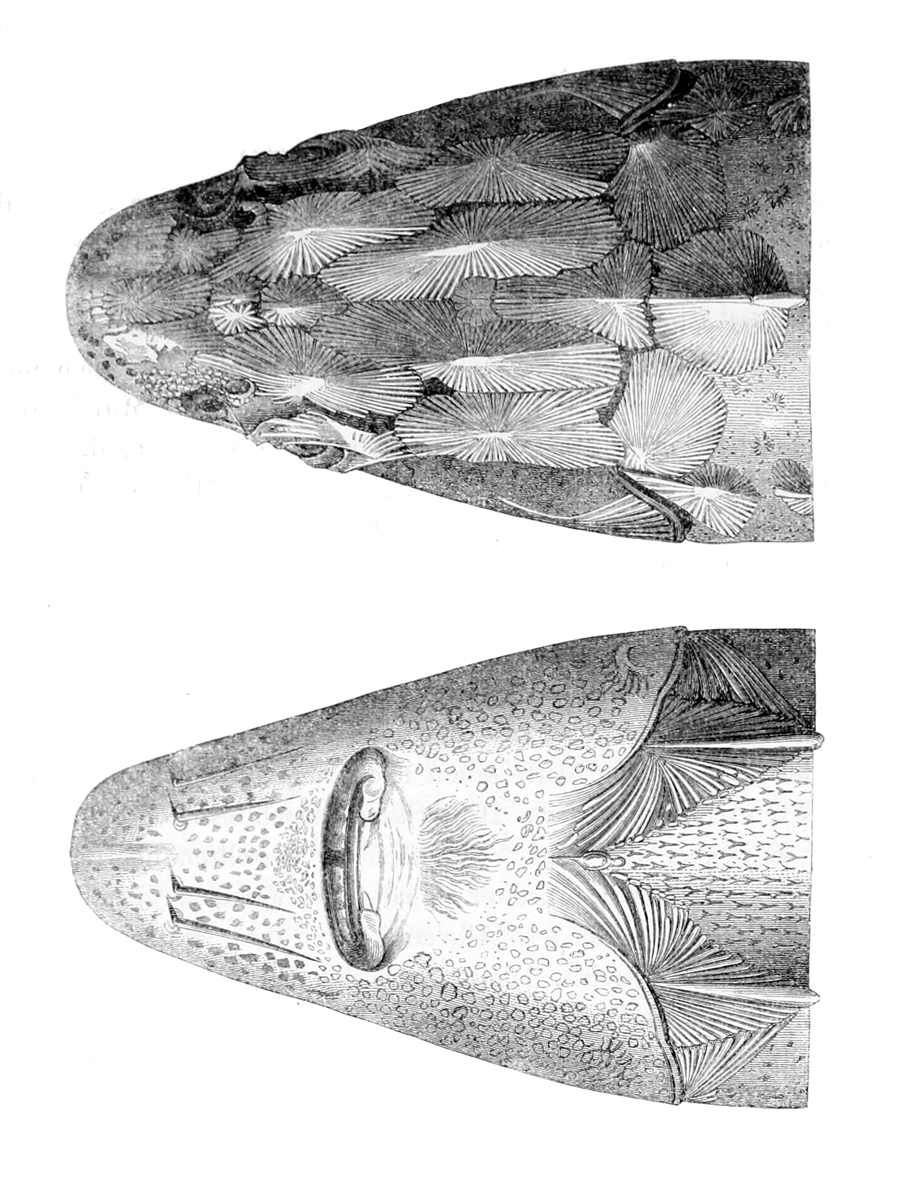Acipenser nudiventris on:
[Wikipedia]
[Google]
[Amazon]
The ship sturgeon, also known as the fringebarbel sturgeon, ship sturgeon, spiny sturgeon, or thorn sturgeon (''Acipenser nudiventris''), is a species of fish in the family Acipenseridae. These fish are typically found along the
benthos
Benthos (), also known as benthon, is the community of organisms that live on, in, or near the bottom of a sea, river, lake, or stream, also known as the benthic zone.estuaries
An estuary is a partially enclosed coastal body of brackish water with one or more rivers or streams flowing into it, and with a free connection to the open sea. Estuaries form a transition zone between river environments and maritime environmen ...
.
Feeding
''Acipenser nudiventris'' typically feed on other animals near thebenthos
Benthos (), also known as benthon, is the community of organisms that live on, in, or near the bottom of a sea, river, lake, or stream, also known as the benthic zone.mollusks,

crustacean
Crustaceans (Crustacea, ) form a large, diverse arthropod taxon which includes such animals as decapods, seed shrimp, branchiopods, fish lice, krill, remipedes, isopods, barnacles, copepods, amphipods and mantis shrimp. The crustacean group can ...
s, and other smaller fish.
Reproduction
''Acipenser nudiventris'' are usually anadromous—meaning they live in saltwater and travel to freshwaters to deposit eggs—but some can spend their entire life cycle in freshwater. Because they travel from saltwater to freshwater to spawn, they often live nearby estuaries. Migration to freshwaters for deposition of eggs occurs during spring between the months of March and May, and fall between October and November. On average, female bastard sturgeon produce between 200,000 and 300,000 eggs over the course of their lifetime. The young ''Acipenser nudiventris'' can live in freshwater for years following birth prior to traveling to the sea, though many migrate to the sea soon after birth. The average time between birth of subsequent ''Acipenser nudiventris'' is around 15 years; variation in generation time of this species is somewhat dependent on human fishing patterns and whether the species is thriving in its environment.Conservation status
Formerly abundant in theBlack
Black is a color which results from the absence or complete absorption of visible light. It is an achromatic color, without hue, like white and grey. It is often used symbolically or figuratively to represent darkness. Black and white ...
, Aral and Caspian seas, its range is now primarily limited to the Ural River
The Ural (russian: Урал, ), known before 1775 as Yaik (russian: Яик, ba, Яйыҡ, translit=Yayıq, ; kk, Жайық, translit=Jaiyq, ), is a river flowing through Russia and Kazakhstan in the continental border between Europe and Asia ...
(in Russia
Russia (, , ), or the Russian Federation, is a transcontinental country spanning Eastern Europe and Northern Asia. It is the largest country in the world, with its internationally recognised territory covering , and encompassing one-eig ...
and Kazakhstan
Kazakhstan, officially the Republic of Kazakhstan, is a transcontinental country located mainly in Central Asia and partly in Eastern Europe. It borders Russia to the north and west, China to the east, Kyrgyzstan to the southeast, Uzbeki ...
), with possible relict
A relict is a surviving remnant of a natural phenomenon.
Biology
A relict (or relic) is an organism that at an earlier time was abundant in a large area but now occurs at only one or a few small areas.
Geology and geomorphology
In geology, a r ...
populations in the Rioni River
The Rioni ( ka, რიონი, ; , ) is the main river of western Georgia. It originates in the Caucasus Mountains, in the region of Racha and flows west to the Black Sea, entering it north of the city of Poti (near ancient Phasis). The city o ...
in Georgia
Georgia most commonly refers to:
* Georgia (country), a country in the Caucasus region of Eurasia
* Georgia (U.S. state), a state in the Southeast United States
Georgia may also refer to:
Places
Historical states and entities
* Related to the ...
and the Safid Rud in Iran
Iran, officially the Islamic Republic of Iran, and also called Persia, is a country located in Western Asia. It is bordered by Iraq and Turkey to the west, by Azerbaijan and Armenia to the northwest, by the Caspian Sea and Turkmeni ...
. One of the most established populations is one in Lake Balkhash
Lake Balkhash ( kk, Балқаш көлі, ''Balqaş kóli'', ; russian: озеро Балхаш, ozero Balkhash) is a lake in southeastern Kazakhstan, one of the largest lakes in Asia and the 15th largest in the world. It is located in the ea ...
in Kazakhstan
Kazakhstan, officially the Republic of Kazakhstan, is a transcontinental country located mainly in Central Asia and partly in Eastern Europe. It borders Russia to the north and west, China to the east, Kyrgyzstan to the southeast, Uzbeki ...
, well outside its natural range, where they were introduced in the 1930s for commercial purposes. A decline in the abundance of ''Acipenser nudiventris'' has been reported due to overfishing and damming, which have led to limitations placed on fishing for bastard sturgeon in areas such as the Ural River. In order to alleviate concerns with rapidly decreasing ''Acipenser nudiventris'', an effort was made to raise these fish in captivity before releasing them back into rivers they once inhabited.
References
Acipenser Fish of the Caspian Sea Fish of the Black Sea Aral Sea Fish of Europe Fish of Western Asia Critically endangered fish Critically endangered fauna of Asia Critically endangered biota of Europe Taxonomy articles created by Polbot Fish described in 1828 {{Acipenseriformes-stub